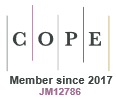Mycogeography in the South Pacific Region: Agaricales, Boletales
E Horak
Australian Journal of Botany Supplementary Series
13(10) 1 - 42
Published: 1983
Abstract
Seventy-five basidiomycetous larger fungi (Agaricales, Boletales and two Hydnales and Aphyllophorales) are selected to demonstrate their mycogeographic relationships and distribution patterns in the South Pacific region (southern South America, New Zealand, Australia/Tasmania, New Caledonia, Papua New Guinea). Particular emphasis is put on species forming ectomycorrhizae with Nothofagus spp. (Fagales) and, to a lesser degree, with Eucalyptus spp. and Leptospermum spp. (Myrtales). Xylophilous fungi growing on rotting wood and debris of the before-mentioned trees (considered to be of southern origin) follow their hosts into all ecological niches. Seven distribution maps illustrate the close and often exclusive biological ties between fungus and host plant(s) that are likely to have been functional before Gondwanaland broke up. After the dispersal of the plates, overland migration of agarics and boletes could have taken place but its effectiveness is questioned, at least in the case ofobligate ectomycorrhizal fungi. Panellus ligulatus, Pluteus perroseus, Dermocybe splendida, Phialocybe improvisa and Pholiota multicingulata are described as new, and two new varieties, viz. Mycena helminthobasis var. novaezelandiae and Pluteus /lammipes var. depauperata, are proposed.https://doi.org/10.1071/BT8310001
© CSIRO 1983


